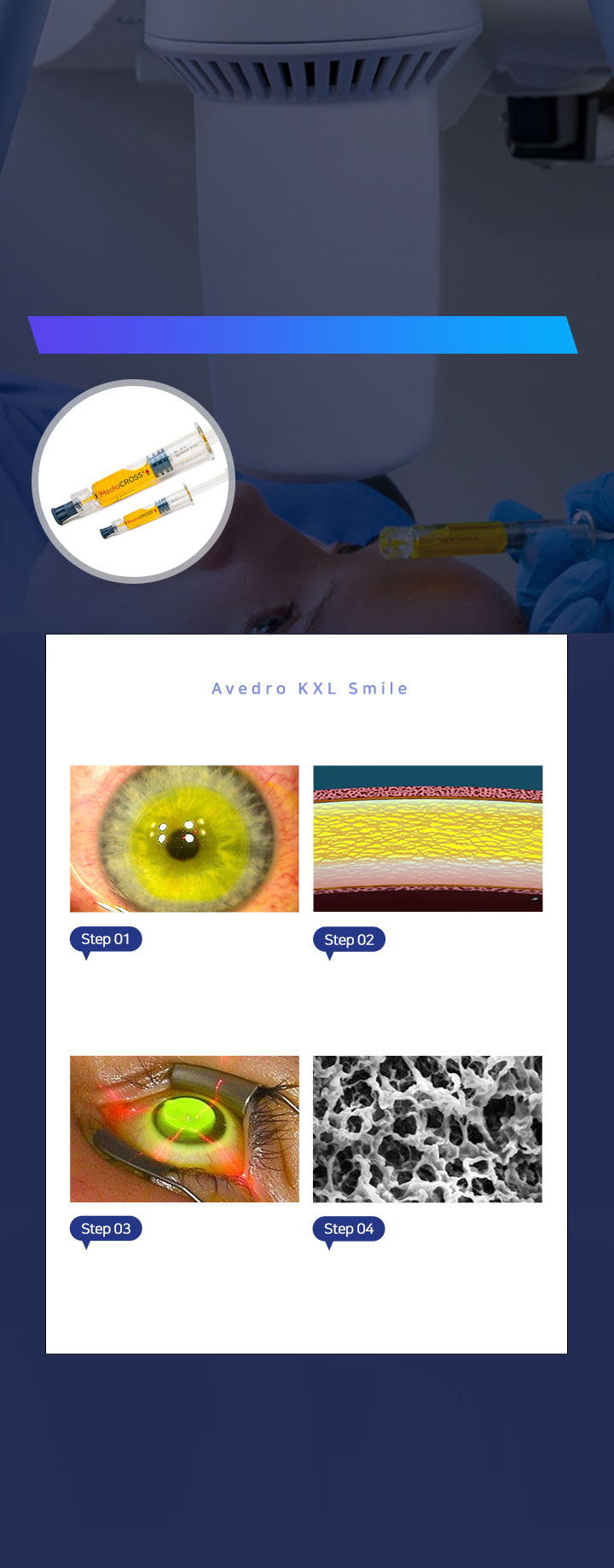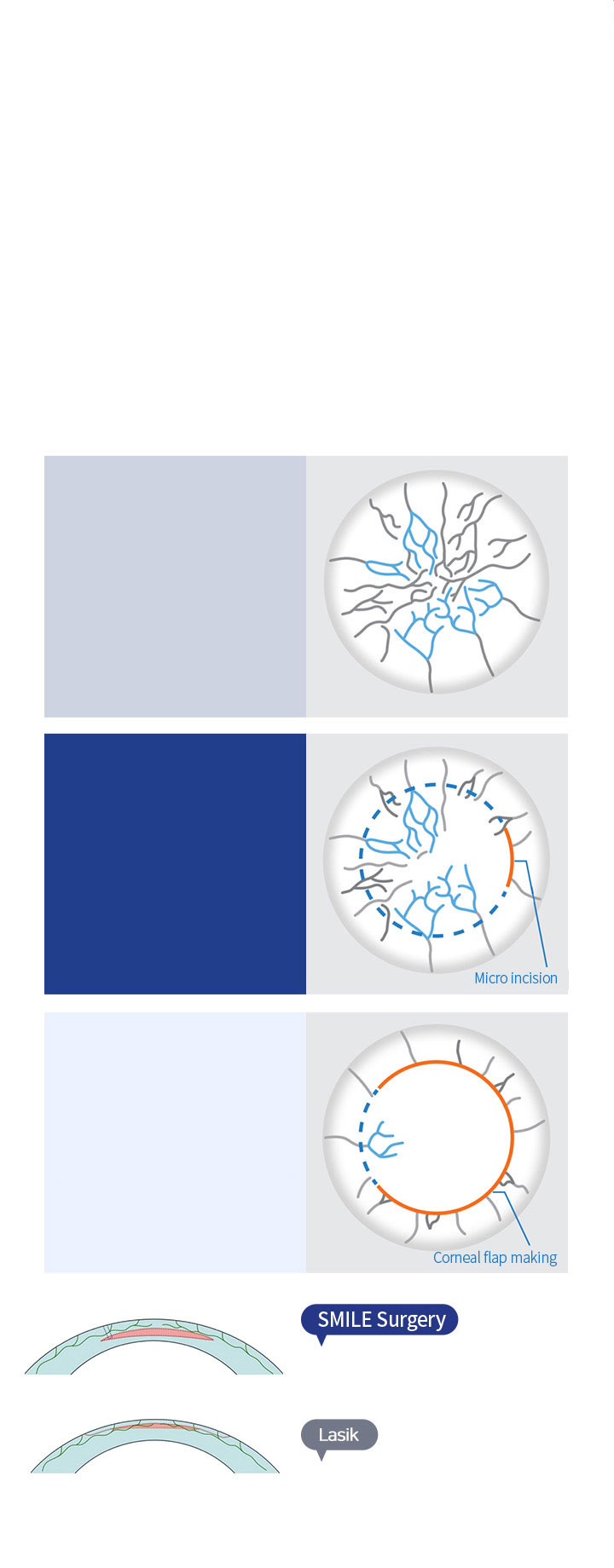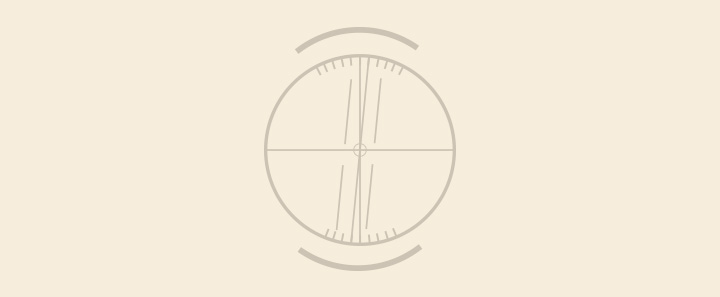
AcuTarget makes SMILE pro
a more precise surgery.
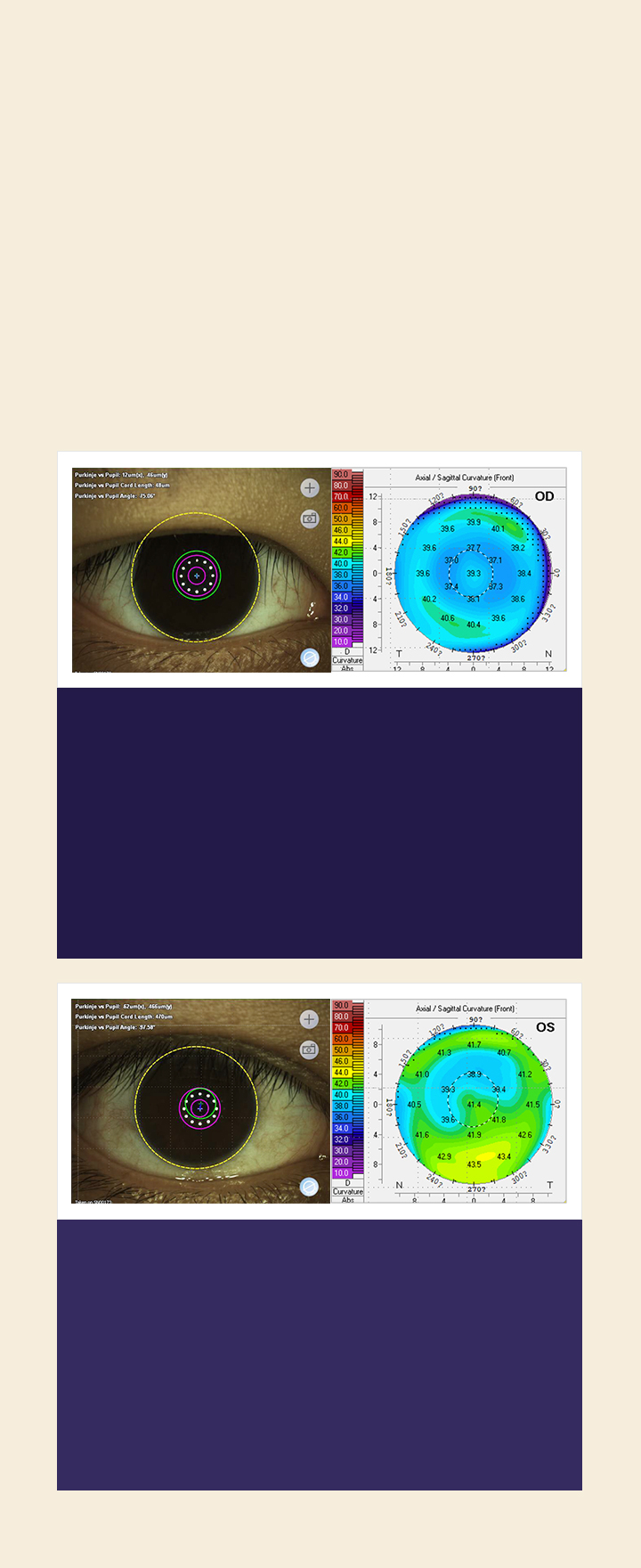
ACUTARGET SMILE LASIK PROGRAM
You can achieve precise correction by linking the actual visual axis (Purkinje center) through AcuTarget examination, rather than the virtual visual axis
(pupil center, Corneal center).
case 01
Alignment of the visual axis, pupil center, and corneal center
Good surgical results can be achieved with vision correction without decentration.
case 02
When the visual axis, pupil center, and corneal center are not matching
Errors may occur due to decentration of correction, which reduces the quality of vision.
CentraLign
AcuTarget SMILE pro’s CentraLign detects eye movement and automatically centers the eye.
Oculign
AcuTarget SMILE pro provides a more precise astigmatism correction solution with the Oculign function that corrects the rotation of the astigmatic axis.
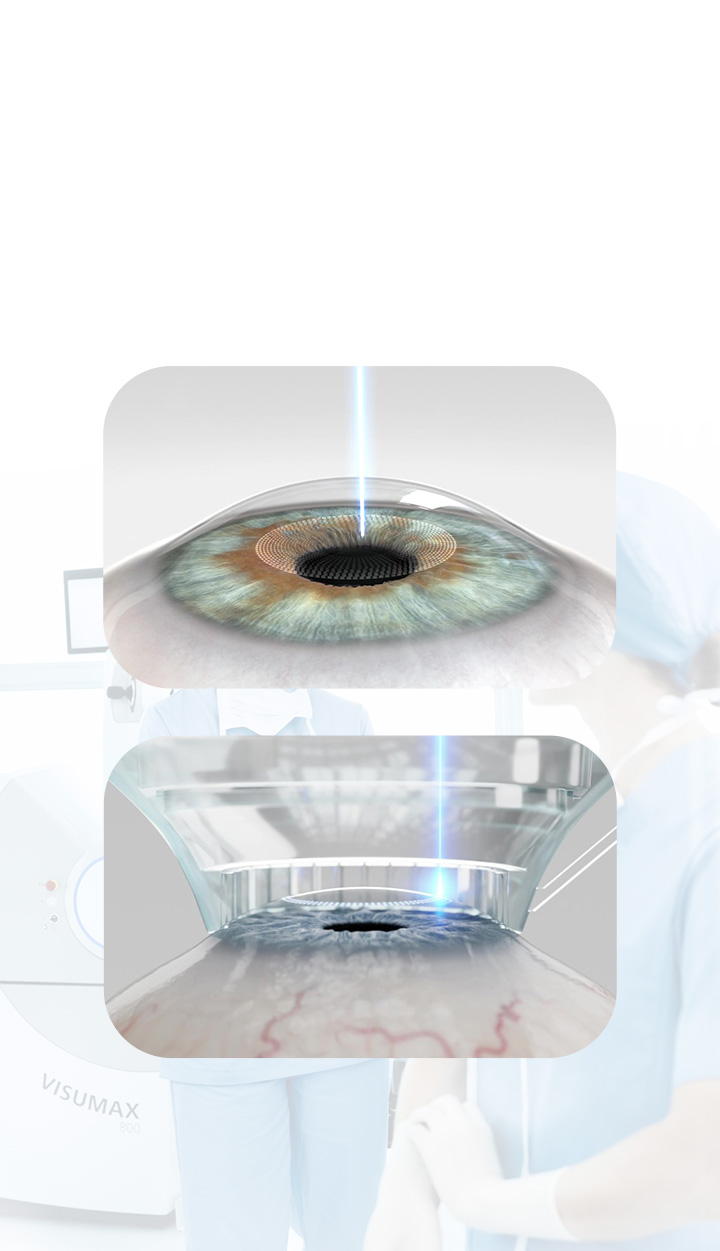
Faster laser speed of
AcuTarget SMILE pro
ZEISS's ultra-precision scanning technology achieves laser emission time of less than 10 seconds.
The short laser emission time of less than 10 seconds reduces the risk of suction loosening (suction loss)
complications that occur during surgery, thereby reducing the psychological burden on the patient.
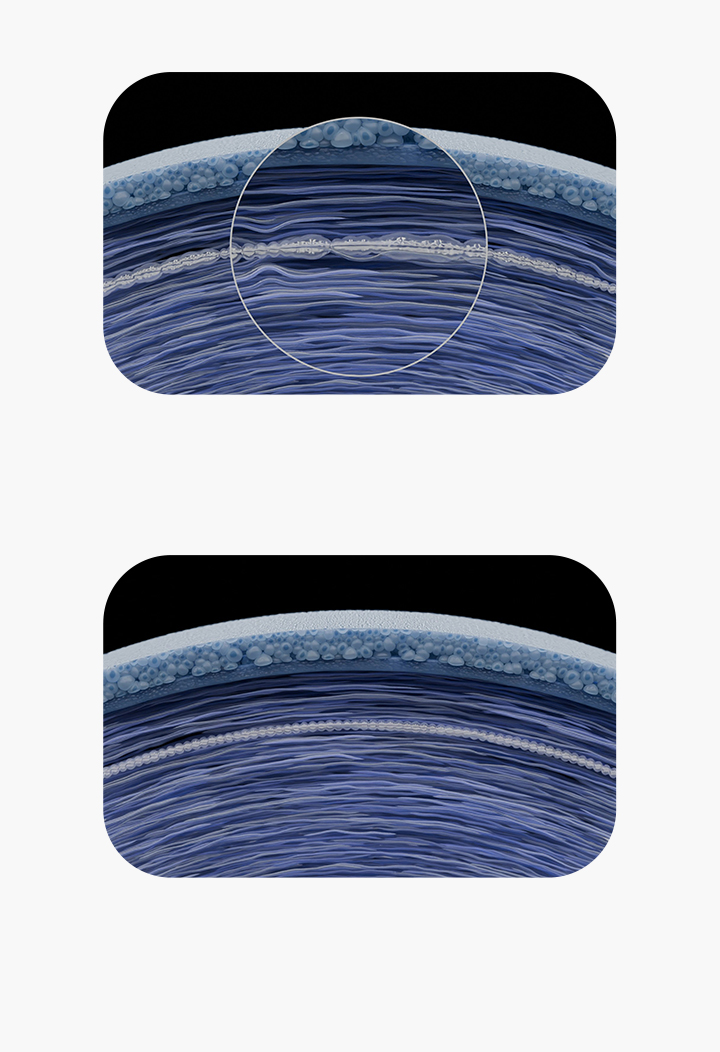
Slow laser speed
tissue deformation due to irregular laser superposition and interference
SMILE pro
Less laser interference and tissue deformation.
Comparison of laser emission time
SMILE pro
(2 MHz, 10’’)
SMILE
(500 kHz, 24’’)
Company S
(4 MHz, 34’’)
Company Z
(5 MHz, 36’’)
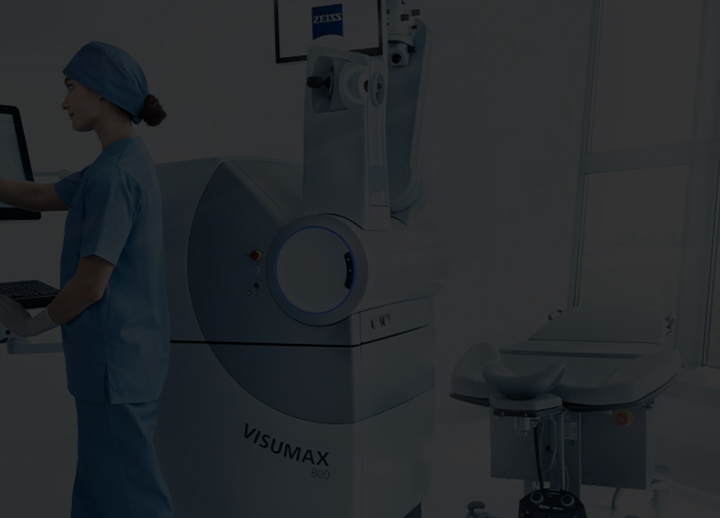
Laser speed
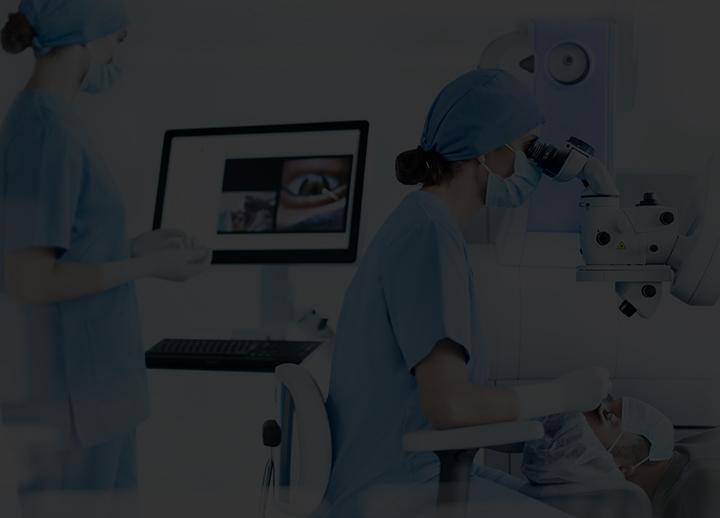
CentraLign
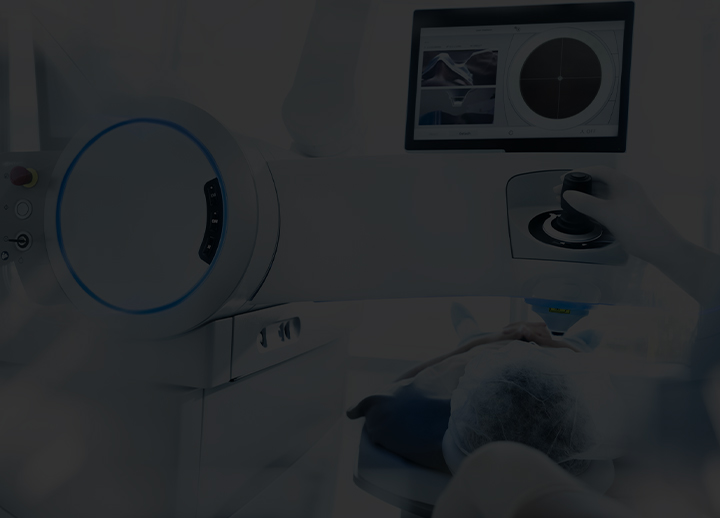
Oculign
Comparison
SMILE pro VIUSMAX 800®
SMILE VisuMax®
Operating mechanism
Robotic
Patient Supporting System
Laser speed
2 Mhz
500 Khz
Duration of laser emission
Less than 10 seconds
25~30 seconds
Visual axis guidance
Automatic (visual axis or pupil center)
Manual (visual axis or pupil center)
Astigmatism axis rotation adjustment
Dynamic
Static
Nomogram
Automatic & Personalized VISULYZE
Manual
Connectivity
FORUM Refractive Workplace
None
" JOEUNNUN VISION CLINIC’s SMILE Solution is pursuing stability and precision at the same time "
JOEUNNUN VISION CLINIC’s SMILE surgery watching on Youtube
Go to YouTube channel +



Do you need a help?
Go to counseling


